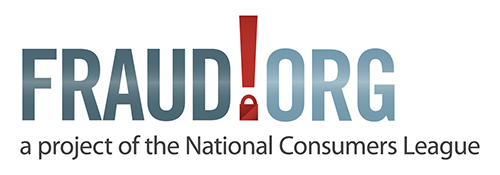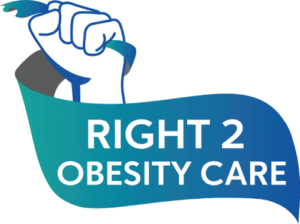Tax ID theft
Tax day may be a date that few consumers look forward to. However, there is one group that uses the day to scam their victims: identity thieves.
Stay safe. Be Informed.
Tax ID fraudsters file early because they have a treasure trove of stolen personal information (names, dates of birth, Social Security numbers), and they’re eager to use that information to steal other people’s tax refunds. Tax identity theft is the use of someone else’s personal information to file a fraudulent tax return or claim tax benefits. This fraud is particularly pernicious because the legitimate taxpayer may have no way of knowing that fraud has been committed. The scam only works for returns that haven’t been filed by legitimate consumers, so fraudsters are highly motivated to file as early as possible. Often, the fraud will only be detected when a taxpayer receives a notice from the Internal Revenue Service (IRS) or state tax authorities of a problem with her return.
Tax identity theft was the single biggest type of identity theft complaints to the Federal Trade Commission in 2014. Conservative estimates put the cost of this fraud to the nation’s taxpayers at $5.2 billion annually.
Here’s how tax identity theft works: Most workers receive their W-2 forms from their employers by the end of January. Since many consumers wait until April to file, a scammer who has access to compromised personal information (such as a Social Security Number, full name, and street address) can take advantage of the delay to file in someone else’s name. Some tax ID thieves even specialize in using children’s identities to fraudulently claim them as dependents. Since the IRS tries to process refunds in as little as three weeks, the scammers receive their fraudulent refunds in the mail or electronically and quickly turn it into untraceable cash. The legitimate taxpayer often only finds out they’ve been a victim when the IRS refuses to process the real return because—according to its records—they’ve already filed a return.
How to spot tax identity fraud
Tax identity fraud is difficult to catch before the fraud occurs. However, consumers who fall victim to tax identity fraud often discover it in one of the following ways:
- If someone else has already filed a tax return using your personal information (such as a Social Security Number), they may get your refund. When you later file your own return, the IRS will send you a notice letter indicating that your refund has already been sent out.
- When someone else uses your Social Security Number to obtain employment, the employer will report those earnings to the IRS. When you file your tax return, you won’t include the identity thief’s earnings in your return. When the IRS notices the discrepancy, they will send you a letter stating that you’ve failed to declare all your income.
- If your income does not meet a certain threshold, you may not be required to file taxes. However, if someone else using your Social Security Number to obtain employment fails to file taxes, your account may end up in collections. A collections notice from the IRS may be a sign of tax identity theft.
If you receive one of these notices from the IRS or state tax authorities, contact the agency immediately. The IRS Identity Theft Protection Specialized Unit can be reached at 1-800-908-4490. A list of state tax authorities’ contact information is available from the Federation of Tax Administrators here.
Reducing your risk
Unfortunately, there is no foolproof way of avoiding tax identity fraud. Since Social Security Numbers and other personal information are so widely available on cyber black markets, chances are that scammers already have the information they need to commit tax identity fraud against many, if not most, American consumers.
However, there are steps that can be taken to reduce risk to the extent possible. These include:
- File your taxes as early as possible during tax season. Scammers depend on the fact that many taxpayers wait until late in tax-filing season to file. Filing early reduces the risk that a tax ID thief will be able to use your personal information to file fraudulently ahead of you.
- Review your credit report for any suspicious activity (such as lines of credit opened without your knowledge). Free credit reports for all three major credit reporting bureau can be obtained at annualcreditreport.com.
- Protect your personal information. When asked to provide a Social Security Number to a business or other entity, ask if there is another form of identification that can be used (such as a driver’s license ID number, phone number or mailing address). This will help slow the spread of the critically important SSN to potential ID thieves.
- Check your annual Social Security Administration earnings statement carefully. If there are earnings listed that you don’t recognize, someone else could be using your identity to obtain employment.
- Don’t give out personal information, such as your SSN, date of birth, or bank account information in response to unsolicited emails, postal mail, over the phone or via text message, social media or other platform.
- Install antivirus software and personal firewalls on your computer and make sure to install all operating system and browser patches promptly.
- Change passwords on online accounts regularly. Be sure to use different passwords on each account. If an online service (like email, social network, bank accounts, etc.) offers more secure technology, such as multi-factor authentication, turn it on.
What to do if you are a victim
Identity theft is a serious crime that can significantly and negatively affect your ability to obtain credit, get a job, or obtain medical care, just to name a few results. Recovering from tax identity theft is not easy, but it can be done through a combination of quick action and careful follow-up. The Internal Revenue Service and Federal Trade Commission recommend the following step-by-step process for addressing tax identity fraud.
- Report the fraud by calling the IRS Identity Protection Specialized Unit at 1-800-908-4490 immediately. You will likely be asked to obtain a police report, fill out an IRS Theft Affidavit Form 14039 and send proof of your identity (such as copy of a Social Security Card, driver’s license, or passport).
- File a complaint with the FTC at https://www.ftccomplaintassistant.gov. At the end of this process, you should receive an Identity Theft Affidavit and a complaint reference number. Save or print the Identity Theft Affidavit. Remember to record the date you filed your complaint. Consumers can also file a complaint by phone at 1-877-438-4338.
- Go to your local police department to obtain a police report. Remember to bring a) a copy of the FTC Identity Theft Affidavit; b) any other proof of the theft (such as an IRS notice); c) a government-issued photo ID; d) proof of address (such as a rental agreement, pay stub, or utilities bill); and e) the FTC’s Memo to Law Enforcement (printable at the link). If your local police department is unable or unwilling to take your identity theft report, ask if you can file a “miscellaneous incidents” report. You can also try filing at a different police station, the local sheriff’s department, state police, or federal authority.
- Contact one of the three major credit reporting bureaus and ask them to place a “fraud alert” on your credit report. A “fraud alert” placed with one credit reporting bureau should automatically be placed on your credit report with the other two bureaus. A fraud alert does not prevent identity thieves from misusing your identity, but it will result in credit reporting bureaus taking additional steps to verify a credit applicant’s information. These alerts generally expire after 90 days, so you may need to renew it periodically. Numbers to call are as follows:
- Equifax.com – 1-800-525-6285
- Experian.com – 1-888-397-3742
- TransUnion.com– 1-800-680-7289
- Resolving tax identity theft with state and federal tax authorities may require many months, or longer. While this process is ongoing, continue to file your taxes, even if you must do so by paper.
- Tax identity theft may be a precursor to other forms of identity theft. Therefore, consumers who wish to take an additional security step may want to consider requesting a “security freeze” on their credit report from each of the three major credit reporting agencies. This step will make it impossible for identity thieves to open new lines of credit in your name. However, it will also prevent you from opening new lines of credit unless you contact the credit reporting agencies to temporarily (or permanently) lift the freeze. There may also be fees levied for placing, lifting, or removing a security freeze depending on the state you live in and whether or not you have proof that you are a victim of identity theft.
- Additional information on spotting and avoiding identity theft is available from the Federal Trade Commission at www.ftc.gov/IDTheft. Taking Charge: What To Do If Your Identity Is Stolen is a free publication from the FTC that offers step-by-step guides, sample letters, and other information that can help you to recover from identity theft. It is available online at https://1.usa.gov/Seg8Oz.
NCL thanks Intuit for the unrestricted educational grant that helped make this guide possible.









